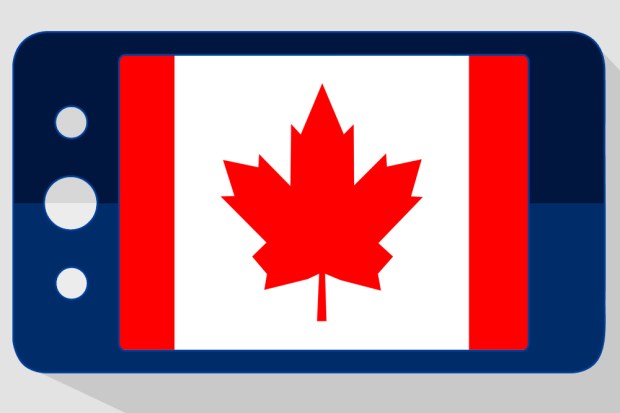TSYS Explores Canadian Payment Preferences

Canadian consumers know what they want when it comes to payments – with credit cards, loyalty and rewards programs, and mobile banking apps at the top of the list. Sarah Hartman, Senior Director of Consumer Payment Solutions at TSYS, sat down with PYMNTS to discuss the latest TSYS Canadian Consumer Payment Choice Study results and how eCommerce is driving a real boost in digital engagement amongst consumers.
PYMNTS: The preference for credit cards continues to rise among Canadian consumers (up from 34 percent in 2014). Based on your findings, what accounts for this significant growth in the use of credit cards?
SH: We found, both from our TSYS findings as well as some other recent payment studies that have been published for the Canadian market, there are two primary factors that have influenced the growth. The first one we would bring up is the attractiveness of loyalty and rewards programs to consumers. We know from our study that rewards can really encourage consumers to use one form of payment over another.
The second factor we’d bring up is the continued growth of eCommerce, because we know consumers tend to have a preference for using credit when they are making online purchases. As I mentioned, the findings we have are very consistent with a couple of other recent studies that have been published by some of the Canadian banks.
PYMNTS: In comparing the payment preferences of Canadian consumers to those in the U.S., what are some key differences and why?
SH: The first difference we noted between our Canadian study and the U.S. study has to do with those payment preferences. When Canadian consumers have both a credit and debit card, they tend to prefer the credit card as their most preferred payment card. But in the U.S., that is reversed. We have found in the past that U.S. consumers have a preference for debit when they have both cards available, although this is narrowing and we are very interested to see what the U.S. study will show in the fall. Those preferences are even wider when we look at a couple of categories like grocery stores and gas stations, where in the U.S. those types of purchases are very heavily debit.
The second area where we were a little surprised with the Canadian survey was in relation to different mobile features. U.S. consumers expressed a slightly higher level of interest in some of the mobile offerings, but again we will see what happens when we get our updated survey results later in the year. Both groups — U.S. and Canadian consumers — tend to prefer mobile features like inquiries and services over payments, at least for now, but we all know the mobile payments space is continuing to grow.
PYMNTS: According to the study, mobile apps are growing in popularity among Canadian consumers. How does the adoption of mobile apps provided by financial institutions compare to other mobile apps?
SH: This was a new question on this year’s survey and we were very interested in the response here. We found consumers who used mobile applications used their bank mobile app almost twice as much during the month than they did any other app. It’s quite a significant difference. Those that used the banking app also tended to be between the ages of 25 and 44, which we found of interest. The Canadian financial institutions should really see these high usage rates as a compliment to the work they have done to not only educate their consumers that they are available, but also for providing good value, obviously. Again, we have asked a similar question in our U.S. survey this year and we will be interested to see what that looks like.
PYMNTS: What does the growth of digital engagement in the Canadian market place mean for the payments industry?
SH: At TSYS we are very excited about the growth of digital engagement and have a lot of great things going on here. For the Canadian market, that’s certainly no exception, as there are many exciting things going on there, too. Some of the earliest mobile wallet offerings were actually offered by Canadian banks, and Canada also has one of the highest penetration rates of contactless point-of-sale systems. That certainly paves the way for digital engagement and mobile wallet adoption as well.
Consumers tend to be most interested in new offerings that provide them with the convenience, ease of use and safety that they have with other methods of payment. I think as we move forward with digital engagement those three things are going to continue to be very important.
PYMNTS: How significant are loyalty programs as an effective incentive for Canadian cardholders? What is the correlation between loyalty programs and the increase in credit card preference among Canadians, if any?
SH: There is definitely a correlation based upon our study, both this year and last year. The loyalty and rewards programs definitely provide an incentive to cardholders, both to decide which credit card to pull out of their wallet and to generally make any type of payment decision. We asked a couple of different questions in our survey and both times reward type features such as discounts, cash back options and other rewards always ranked the highest as what would encourage a consumer to use one payment form over another.
To learn more about Canadian consumer preferences and to get complete survey results, click here.
Sarah Hartman
Senior Director of Consumer Payment Solutions of TSYS
Sarah Hartman is the Senior Director of Consumer Payment Solutions at TSYS, a global payments processor. Her responsibilities include product and strategy activities associated with the consumer credit and debit card issuing business. Hartman has over 25 years of payments industry experience and is an elected member of the U.S. EMV Migration Forum (EMF) Steering Committee and participates in other payment groups, including ACT Canada and the Smart Card Alliance’s Payments Council. Prior to joining TSYS, Sarah held a number of leadership roles with a large consumer bank where her responsibilities included: consumer payment products, deposit and lending products, ATMs, and online banking and bill payment. Hartman has extensive product management, sales and marketing experience. She has a B.S. degree in Accounting from Miami University and an M.B.A from the University of Dayton.
